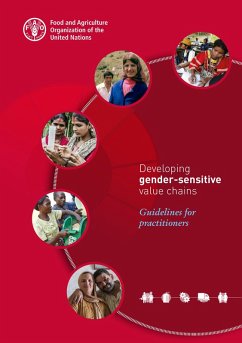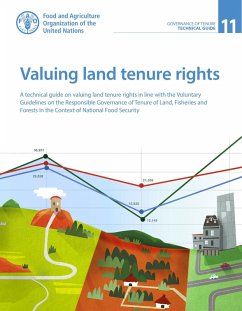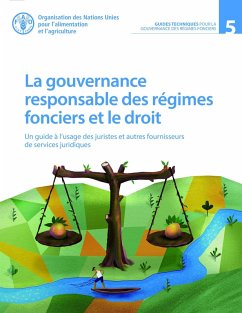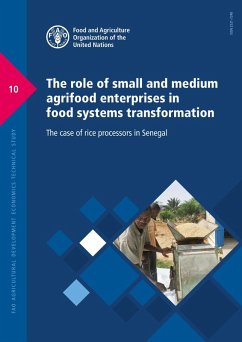
Running Out of Time: The Reduction of Women's Work Burden in Agricultural Production (eBook, ePUB)

PAYBACK Punkte
0 °P sammeln!
Based on a broad literature review, this publication discusses rural women's time poverty in agriculture, elaborates on its possible causes and implications and provides insight into the various types of constraints that affect the adoption of solutions for reducing work burden. This paper raises questions about the adequacy of women's access to technologies, services and infrastructure and about the control women have over their time, given their major contributions to agriculture. It also looks into the available labour-saving technologies, practices and services that can support women to be...
Based on a broad literature review, this publication discusses rural women's time poverty in agriculture, elaborates on its possible causes and implications and provides insight into the various types of constraints that affect the adoption of solutions for reducing work burden. This paper raises questions about the adequacy of women's access to technologies, services and infrastructure and about the control women have over their time, given their major contributions to agriculture. It also looks into the available labour-saving technologies, practices and services that can support women to better address the demands derived from the domestic and productive spheres and improve their well-being. The reader is presented with an overview of successfully-tested technologies, services and resource management practices in the context of water, energy, information and communication. The findings elaborated in this paper feed a set of recommendations provided for policy makers and development partners. A gender-transformative approach at community and household level is suggested as a way forward to promote women's increased control over the allocation of their time.
Dieser Download kann aus rechtlichen Gründen nur mit Rechnungsadresse in A, B, CY, CZ, D, DK, EW, E, FIN, F, GR, H, IRL, I, LT, L, LR, M, NL, PL, P, R, S, SLO, SK ausgeliefert werden.













